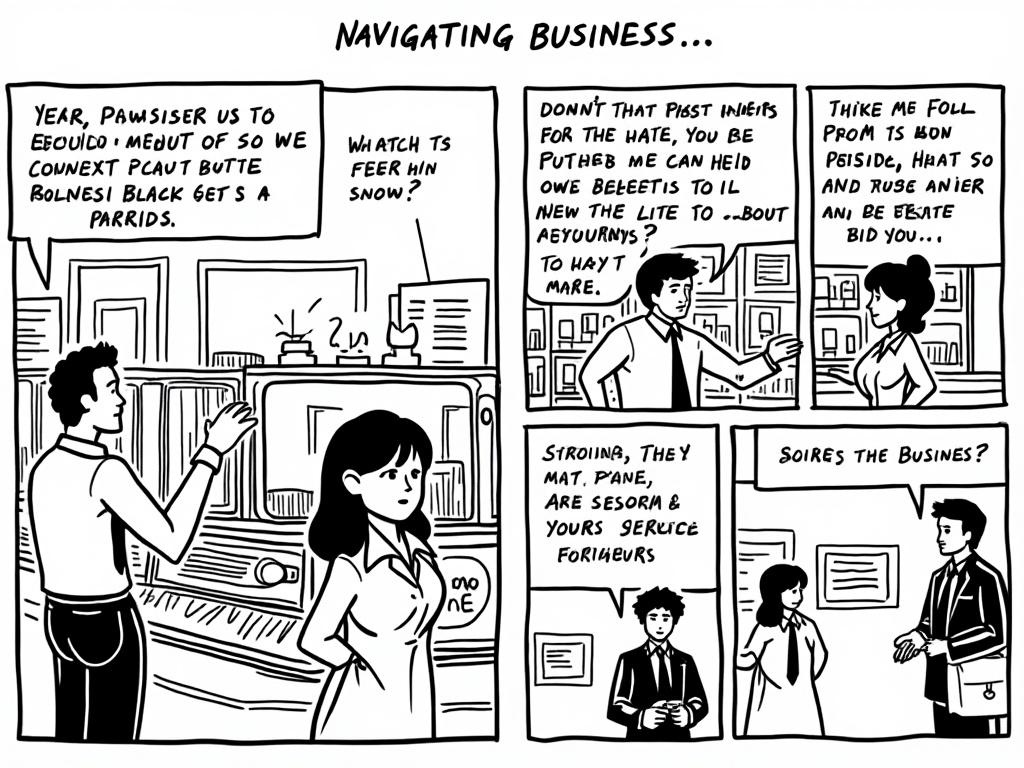
Pay Off Your Mortgage or Buy Another Property? Balancing Growth vs Debt
Reading time: 8 minutes
Standing at the crossroads of financial freedom? You’re facing one of the most consequential decisions in wealth building. Let’s cut through the noise and explore the strategic pathways that successful investors use to maximize their financial potential.
Table of Contents
- Understanding the Strategic Dilemma
- The Case for Mortgage Payoff
- The Case for Property Expansion
- Financial Analysis Framework
- Risk Assessment and Mitigation
- Your Decision Framework
- Your Strategic Roadmap Forward
- Frequently Asked Questions
Understanding the Strategic Dilemma
Here’s the straight talk: This isn’t just about numbers—it’s about fundamentally different philosophies of wealth building. Debt elimination advocates prioritize security and guaranteed returns, while growth investors embrace calculated risks for potentially higher rewards.
According to recent Federal Reserve data, the median mortgage interest rate sits at approximately 7.1%, while historical real estate appreciation averages 3.8% annually. But here’s what most people miss: your personal situation matters more than these averages.
The Psychological Factor
Consider Sarah, a 42-year-old marketing executive from Denver. She inherited $180,000 and faced this exact dilemma. Her mortgage balance was $165,000 at 6.5% interest. Despite the mathematical arguments for investing, her sleepless nights about debt convinced her to pay off the mortgage. Two years later, she describes it as “the best decision for my mental health and family stability.”
The Opportunity Cost Reality
Conversely, Mike, a software engineer from Austin, used his $200,000 inheritance to purchase a rental duplex. With 20% down, he acquired a $400,000 property generating $3,200 monthly rent. After expenses, his net cash flow is $800 monthly, plus appreciation potential.
The Case for Mortgage Payoff
Let’s examine why eliminating mortgage debt might be your optimal strategy, especially in today’s economic climate.
Guaranteed Return on Investment
When you pay off a 6.5% mortgage, you’re essentially earning a guaranteed 6.5% return—tax-free. This return is certain, immediate, and requires zero ongoing management. In volatile markets, this guarantee becomes increasingly valuable.
Cash Flow Liberation
Eliminating your mortgage payment creates immediate monthly cash flow improvement. For a $2,500 monthly mortgage payment, that’s $30,000 annually in freed-up cash flow. This enhanced liquidity provides flexibility for future opportunities and reduces financial stress.
Monthly Cash Flow Impact Comparison
Risk Reduction Benefits
Mortgage payoff eliminates foreclosure risk entirely. In economic downturns, owning your home outright provides unmatched security. You maintain housing stability regardless of employment changes or market fluctuations.
The Case for Property Expansion
Now let’s explore why leveraging your current mortgage to acquire additional properties might accelerate your wealth building journey.
Leverage Amplification
Real estate’s power lies in leverage amplification. With 20% down, you control 100% of a property’s appreciation. If property values increase 4% annually, your actual return on invested capital could exceed 20%.
Here’s a real-world example: Jennifer, a nurse practitioner from Phoenix, kept her existing 3.2% mortgage and purchased a rental property in 2019. Her $50,000 down payment on a $250,000 rental has generated $18,000 in annual cash flow plus $28,000 in appreciation—a 92% return on her initial investment.
Tax Advantages
Investment properties offer significant tax benefits unavailable to personal residences:
- Depreciation deductions on rental properties
- Interest deductibility on investment property mortgages
- Expense deductions for maintenance, management, and improvements
- 1031 exchanges for tax-deferred property swaps
Inflation Hedge
Fixed-rate mortgages become advantageous during inflationary periods. You’re repaying debt with cheaper future dollars while rental income typically adjusts upward with inflation.
Financial Analysis Framework
Let’s break down the numbers with a practical comparison framework.
| Scenario | Mortgage Payoff | Property Purchase |
|---|---|---|
| Initial Investment | $200,000 | $200,000 (20% down) |
| Immediate Cash Flow | +$1,700/month | +$400/month |
| 10-Year Wealth Impact | $204,000 | $438,000* |
| Risk Level | Low | Medium-High |
| Liquidity | High | Low |
*Assumes 4% annual appreciation and consistent rental income growth
The Break-Even Analysis
Your decision hinges on whether you can achieve returns exceeding your mortgage interest rate after taxes and fees. If your mortgage rate is 6.5%, you need investment returns above 8-9% to justify the additional risk.
Risk Assessment and Mitigation
Every strategy carries inherent risks. Let’s examine the primary concerns and mitigation strategies.
Property Investment Risks
Vacancy Risk: Rental properties may experience vacancy periods, reducing cash flow. Mitigation: Maintain 3-6 months of expenses in reserves and choose properties in stable rental markets.
Market Risk: Property values can decline, especially in localized markets. Mitigation: Diversify geographically and focus on properties with strong fundamentals—good schools, employment centers, and infrastructure.
Maintenance and Management: Properties require ongoing attention and unexpected expenses. Budget 10-15% of rental income for maintenance and consider professional property management.
Mortgage Payoff Risks
Opportunity Cost: Paying off low-interest debt may sacrifice higher-return opportunities. Liquidity Risk: Home equity is illiquid and may require expensive extraction methods.
Your Decision Framework
Use this practical framework to determine your optimal path:
Step 1: Assess Your Risk Tolerance
Rate your comfort level with the following scenarios on a scale of 1-10:
- Managing tenant issues and property maintenance
- Handling potential vacancy periods
- Dealing with property value fluctuations
- Managing multiple debt obligations
If your average score is below 6, mortgage payoff likely aligns better with your risk profile.
Step 2: Evaluate Your Financial Foundation
Ensure you have:
- Emergency fund: 6-12 months of expenses
- Stable income: Consistent employment or business cash flow
- Existing retirement savings: On track for retirement goals
- Manageable debt-to-income ratio: Below 36% including potential new mortgage
Step 3: Market Analysis
Research your target investment market:
- Rental yield expectations (aim for 8-12% gross yield)
- Property appreciation trends
- Tenant demand and demographics
- Local economic indicators
Your Strategic Roadmap Forward
Rather than viewing this as an either-or decision, consider a phased approach that balances security with growth potential:
Phase 1: Foundation Building (Months 1-6)
- Strengthen your emergency fund to 12 months of expenses
- Maximize retirement contributions to capture employer matches
- Research investment markets and property opportunities
- Consult with tax professionals to understand implications
Phase 2: Strategic Implementation (Months 6-18)
- If pursuing property investment: Secure pre-approval, identify properties, and establish property management systems
- If choosing mortgage payoff: Execute payment strategy and plan for freed cash flow deployment
- Monitor market conditions and adjust strategy as needed
Phase 3: Optimization and Growth (Months 18+)
- Scale successful strategies based on performance
- Consider hybrid approaches using increased cash flow
- Regularly reassess your portfolio balance and risk tolerance
Remember: The best strategy is one you can execute consistently while sleeping well at night. Your peace of mind and financial security are interconnected—optimize for both.
As real estate markets continue evolving and interest rates fluctuate, the fundamentals remain constant: match your strategy to your risk tolerance, timeline, and financial goals. What matters most isn’t following someone else’s path, but creating a sustainable wealth-building approach that works for your unique situation.
What’s your next move? Will you prioritize the guaranteed peace of mind that comes with mortgage freedom, or embrace the growth potential of strategic property investment?
Frequently Asked Questions
Should I pay off my mortgage if I’m close to retirement?
Generally, yes. As you approach retirement, reducing fixed expenses becomes more important than growth potential. Eliminating mortgage payments provides predictable cash flow reduction and peace of mind during your transition to retirement income. However, if you have a very low interest rate (below 4%) and strong retirement savings, maintaining the mortgage while investing excess funds might still make sense.
Can I do both strategies simultaneously with a smaller amount?
Absolutely. Many successful investors use a “split strategy”—allocating 50-70% toward mortgage principal reduction while investing the remainder in real estate or other assets. This approach balances security with growth potential, though it may not maximize either strategy individually. Consider this if you’re unsure about your risk tolerance or want to test property investment on a smaller scale.
How do I know if a rental property will generate positive cash flow?
Use the 1% rule as a starting point: monthly rent should equal at least 1% of the purchase price. Then subtract all expenses including mortgage payment, property taxes, insurance, maintenance reserves (10-15% of rent), vacancy allowance (5-10%), and property management fees if applicable. If the result is positive after these deductions, you likely have a cash-flowing property. Always verify local rental rates and expenses before purchasing.

Article reviewed by MDavid Cohen, Chief Strategy Officer | Architect of Scalable Growth for Tech Startups, on July 7, 2025


